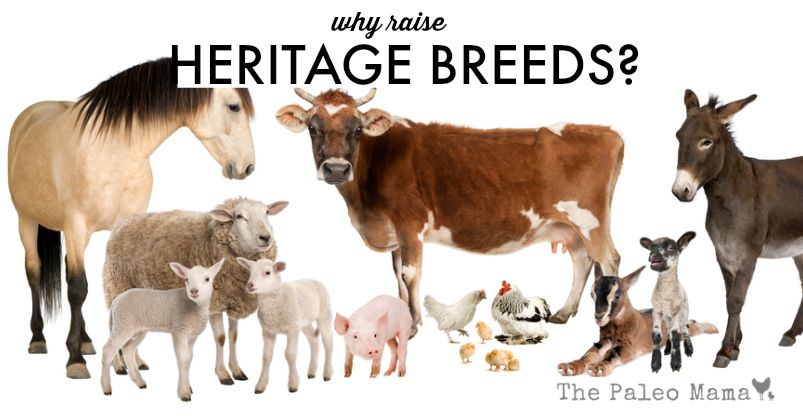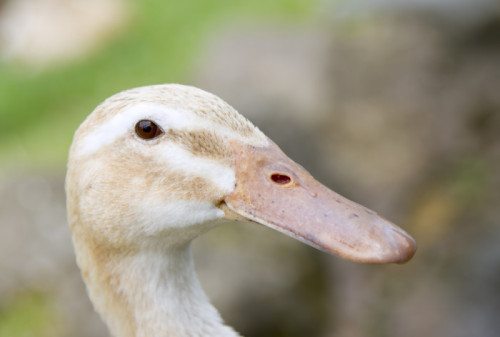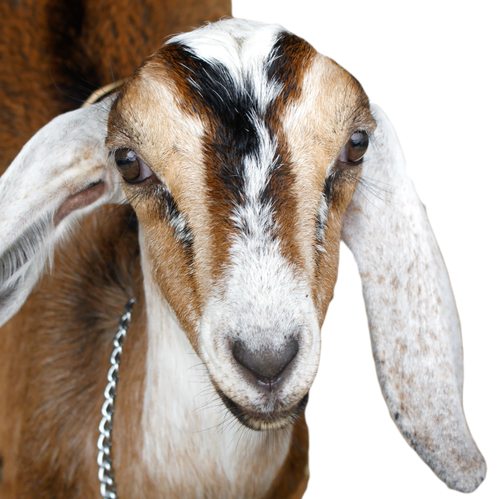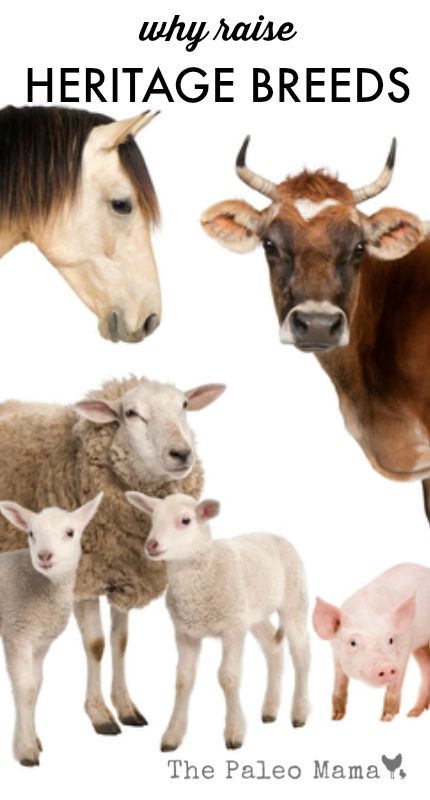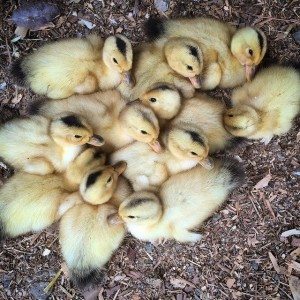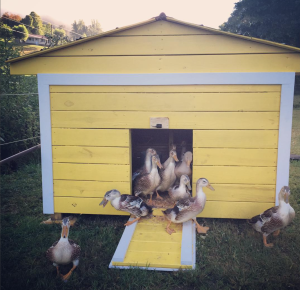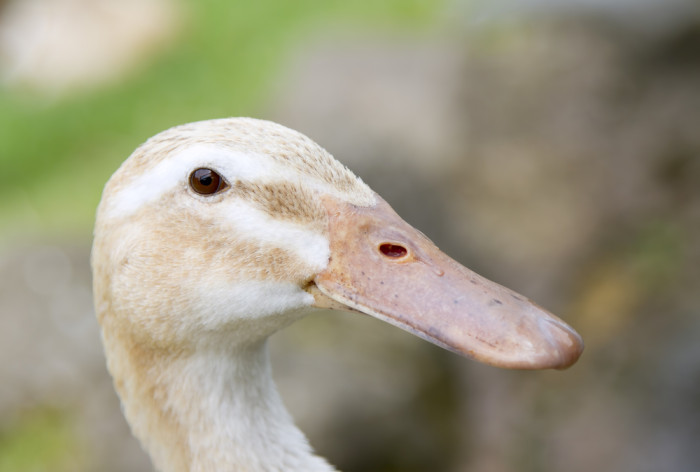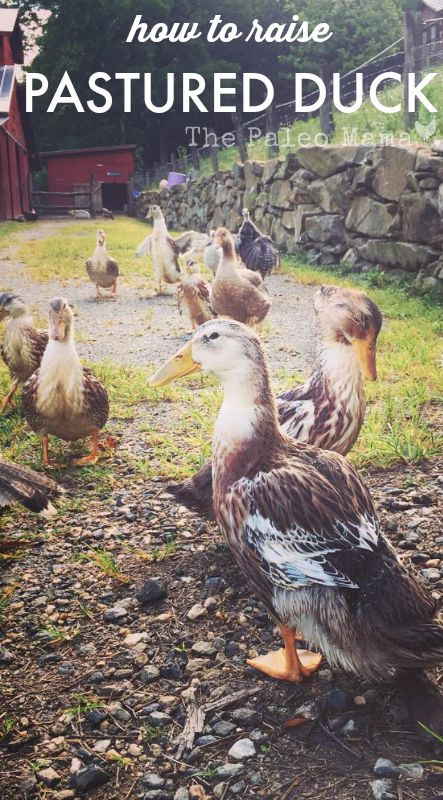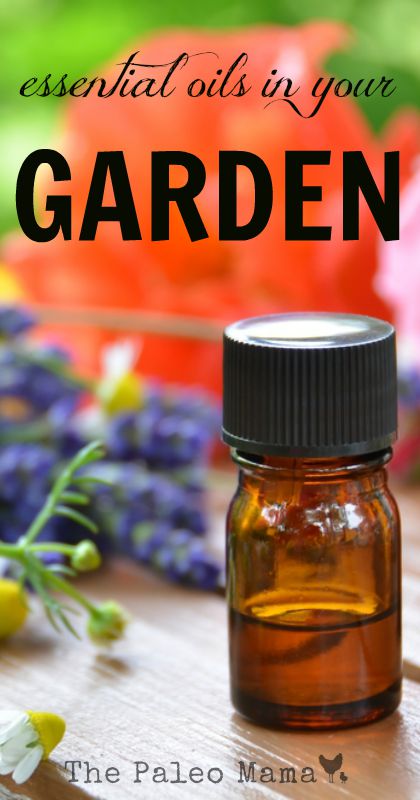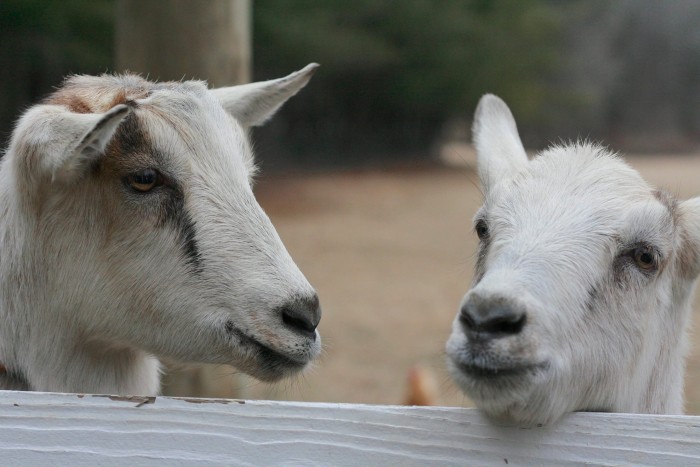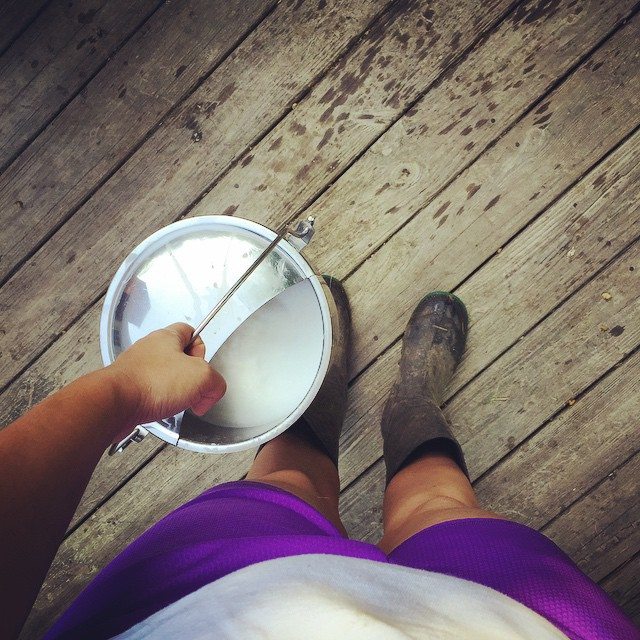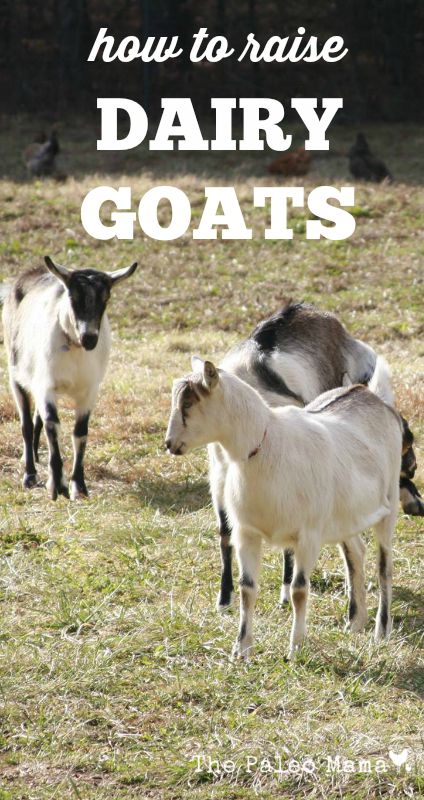It is the basic intent for our title homestead to develop our farm on the principles of self-sufficiency, self- reliance and good stewardship of the resources God has given to us. We have recognized the negative effect of the consumer-based lifestyle of most Americans on both the quality of life and the health of this planet, and made the conscious decision to do everything we can to be self-sufficient in all ways. That’s why we are involved in homesteading, raising and preserving our own fruits and vegetables as much as is possible, using only natural and organic products both in our home and in our barnyard, and deliberately choosing only Heritage Breeds (endangered species) of animals and poultry to raise for both breeding and eating.
Part of that choice has been to raise pastured rabbits. Before we moved to this beautiful 10-1/2 acre farm we lived on a rented 3 acre farm, and raised meat rabbits as part of our barnyard menagerie there.
We have plans to again begin raising and breeding rabbits for meat and as a way to help preserve those rabbits that are part of endangered species. In this blog we hope to answer these questions on how to raise pastured meat rabbits:
- Why raise rabbits?
- What are the choices of rabbit breeds?
- What are the basic requirements for housing and feeding rabbits?
- When and how do you cull the rabbits for meat?
1. Why raise rabbits?
There are some considerations you need to confront before you choose to raise rabbits. These include:
- How much time do you have to dedicate to this project?
- How much space is needed to raise rabbits?
- Do you want to find a market for your animals?
- How easy is butchering the animal?
Rabbits can be raised in both suburban area and on farms. They are not always considered livestock by governmental agencies, so may be permitted with other animals are not. However do check with your local zoning authorities first. Rabbits are fairly easy to raise. The does take care of themselves, so no special equipment other than the cages are needed.
However it can be fairly difficult to find a market for rabbit meat. While you may be permitted to process your own rabbit meat, regulations can prevent you from processing it to sell to others. In addition, because rabbits are so cute and cuddly, many people will be repulsed at the idea of killing and eating them. You may even grow to consider them as pets, and find that you are unable to follow through with the culling.
2. What are the choices of rabbit breeds?
Choosing to raise pastured rabbits allow your animals to exercise and behave as rabbits are meant to behave. It improves their overall quality of life, and gives the rabbit farmer a way to manage rabbit housing easily. Choosing the right breed for pasturing is important, because you want your meat rabbits to reach a good size on pasture.
A rabbit destined for meat should be compact and short, with a blocky appearance. There should be no visible hip bones, and it should be as wide as it is tall.
There are several typical meat rabbits, which include:
- Californian
- American Chinchilla
- New Zealand
- Standard Rex
- Silver Fox Flemish Giant
A larger boned breed such as the Flemish should be bred with a less boney breed such as the Rex. Otherwise you will have more bone than meat on your processed rabbits.
If you are interested in raising heritage breeds, like we do, then these two breeds of rabbits are a great choice:
- American Chinchilla—on the critical list, this is the most rare of the Chinchilla breeds. Despite the breed’s fine meat producing qualities, today’s producers prefer an all-white rabbit. The American Chinchilla is a large, hardy, gentle animal, with a mature weight of 9-12 pounds. They produce large litters, have good mothering instinces, and reach market weight quickly.
- Silver Fox—a threatened breed, the silver fox is a beautiful rabbit. Does have large litters, produce plenty of milk, are excellent mothers, and make wonderful foster mothers. Silver Fox are known for their docile and gentle nature. They are born either solid black or bue, and begin to show the silvering of their fur by 4 weeks. The Silver Fox will reach 9-12 pounds when mature.
3. What are the basic requirements for housing and feeding rabbits?
It is not difficult to raise pastured rabbits. The rabbits should live in wire cages placed right on the ground. Bucks and does are housed individually. Each morning you will need to move each cage one length down the pasture to a new patch of grass. In the evening you can offer them hay, fresh vegetables, and pellets. This method is the same as maintaining a chicken tractor.
The rabbits will eat the grass—approximately six square feet per day per rabbit—to a close crop. When you shift the cage in the morning, the manure is spread, providing yesterday’s patch of grass instant organic fertilizer. You should not return the cases to those spots for at least a few months up to a year to allow the grass and other plants to recover.
There are many benefits to raising meat rabbits on pasture. Here are a few:
- Moving cages, checking water bottles and providing food takes less than ten minutes daily.
- The rabbits eat significantly less purchased food, preferring lush pasture. The adult rabbits only eat about half a cup of pellets a day while on pasture, and are sleek and muscular.
- The areas on which the bunnies have been are lush and healthy compared to non-grazed areas. They are helping you to have a pasture that is a productive ecosystem with no synthetics and no mowing.
Your rabbits will thrive on this lifestyle from day one. Rabbits have a reputation for having delicate digestive systems, but pastured rabbits rarely suffer upsets from the pasture nutrition.
If you are breeding your rabbits, you will want to remove the does who are ready to give birth from the pasture and keep them in indoor cages. Keep the does and kits together for about five weeks after birth. At five weeks you can return the doe to pasture, but keep the kits indoors for one more week. After a week alone, you can put all the bunnies in a cage together on the pasture.
Each rabbit pen should be approximately 3 feet by 8 feet and about 2 feet high. The one critical aspect of the wire cages used to house your rabbits is the construction of the floor. You can make the roof from corrugated aluminum roofing, and the sides from wire mesh. The bottom of the pen should have thin, wooden slats running the 8-foot length of the pen, with a reinforcing middle cross bar. The slats should be about 2-3 inches apart.
The pen should always be moved in the direction of the slats (moving the 8-foot sides forward each time). This is because rabbits will only feed on the tips of grasses and plants that are point upwards. They like to nibble from the tips down toward the roots. If the stalks are bent downwards, the rabbits will ignore the greenery and only eat whatever other feed is provided.
Your pasture will supply 25-40 percent of the rabbit’s dietary needs. They will eat clover and grasses, but prefer “stemmy” or “scrubby” plants like beet greens, comfrey, and other plants with developed stalks. During the winter months when they are unable to be on the pasture, they will do well with root crops like carrots, parsnips, rutabaga, and hay. Alfalfa pellets (non-medicated) will supply the additional needed nutrition.
When and how do you cull the rabbits for meat?
Culling your rabbits for meat is nobody’s favorite part of raising rabbits. It is good to remember that the methods used to slaughter small and large livestock in factory farming is far worse that culling your own rabbits. Killing your own meat is a respectful and honorable thing to do. You gave the rabbits a good life and will be giving them a clean death, which is better than either factory life or wild life for a rabbit.
Your meat rabbits will be ready for butchering at 10 to 12 weeks, and will dress out to about 4-5 pounds of meat. Humane rabbit killing is very important, as any stress during the process can result in the release of adrenaline and other endocrine hormones that may negatively affect the flavor of the rabbit meat, and will toughen the meat.
There are three preferred methods for butchering. I will list each, and will give you the source where you can begin your own research into the specifics of this process. (Source)
- The broomstick method (our preferred method)
- The Arterial Bleed
- A fatal blow
If your farm’s rabbit meat tastes sweet like chicken, that means the rabbit died peacefully and humanely.
If the butchering process scares you but you still want to give raising meat rabbits a go, you can usually find a small processor near you who will butcher and dress your rabbits for a fee.
Raising pastured meat rabbits is a great for the backyard homesteader with very little acreage and great for the homesteader with lots of land. I’m confident you will love the taste of home-raised rabbit meat and the delicious stock and pate’ you can make with the bones and organs!
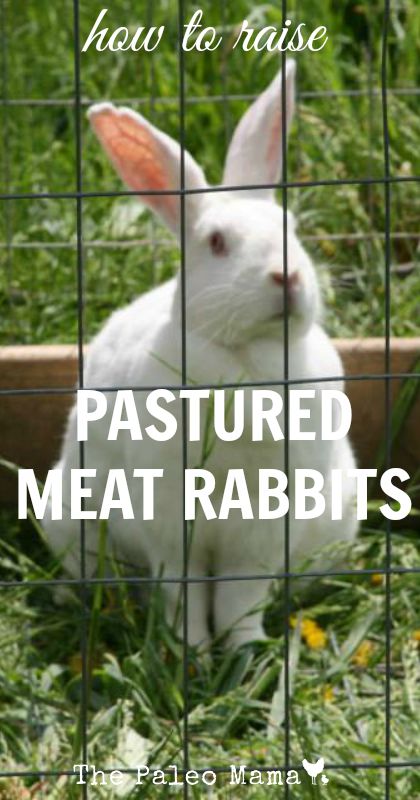
Sources
- https://www.rudolphsrabbitranch.com/rrrpt1.htm
- https://www.mofga.org/Publications/MaineOrganicFarmerGardener/Winter20092010/Rabbits/tabid/1392/Default.aspx
- https://www.livestockconservancy.org/index.php/heritage/internal/conservation-priority-list#Rabbits
- https://www.motherearthnews.com/homesteading-and-livestock/rabbits-on-pasture-intensive-grazing-with-bunnies-zbcz1504.aspx
- https://www.outofthismess.com/animals-1/rabbits/rabbit-culling/





